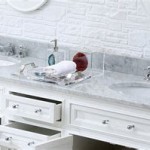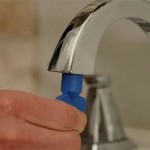How to Get Rid of Bugs in Your Bathroom
Finding unwanted insects in a bathroom is a common household problem. The consistently damp and humid environment, coupled with readily available water sources, makes it an attractive habitat for a variety of pests. Effective control requires a multi-faceted approach, focusing on identification, elimination, and preventative measures.
Identifying Common Bathroom Bugs
Before implementing any control strategies, accurate identification of the infesting insect is crucial. Different bugs require different treatment methods. Some of the most frequently encountered bathroom pests include:
*Silverfish:
These wingless, nocturnal insects are characterized by their silvery-grey color and fish-like movements. They thrive in humid environments and feed on starchy materials, such as paper, glue, and fabrics. They are typically found near drains, sinks, and bathtubs. *Drain Flies (Moth Flies):
Small, fuzzy flies that resemble moths, drain flies breed in stagnant water and organic matter buildup within drains. Their presence indicates a potential drainage issue or a lack of proper drain cleaning. *Cockroaches:
Cockroaches are adaptable and resilient pests that can survive in various environments. They are attracted to moisture and food sources, making bathrooms a potential haven. Different species of cockroaches may be found, each with its own preferred habitat and behavior. *Spiders:
Spiders are predators that enter bathrooms in search of prey, such as other insects. While most spiders are harmless, their presence can be unsettling. Certain species, such as cellar spiders, are commonly found in dark, damp areas. *Centipedes and Millipedes:
These elongated arthropods prefer moist environments and are often found under sinks, around drains, or in damp corners of the bathroom. Centipedes are predatory, while millipedes typically feed on decaying organic matter. *Fruit Flies:
Though commonly associated with kitchens, fruit flies can also appear in bathrooms if there are sugary residues present, such as spilled shampoo or soap. They are attracted to fermenting substances and can quickly multiply.Correctly identifying the type of bug infestation is the first vital step for effective control.
Eliminating Existing Infestations
Once the pest has been identified, appropriate elimination methods can be implemented. These methods may involve a combination of cleaning, trapping, and targeted treatments.
*Cleaning and Sanitation:
Thoroughly cleaning the bathroom is paramount. Remove any standing water from sinks, bathtubs, and showers. Wipe down surfaces to eliminate moisture and potential food sources. Pay particular attention to cleaning drains and removing hair or other debris that may be accumulating. *Addressing Drain Issues:
For drain fly infestations, cleaning the drains is essential. Use a drain snake or brush to remove any organic matter buildup. Boiling water or commercial drain cleaners can also be used, following label instructions carefully. Consider using enzyme-based drain cleaners that break down organic matter over time. *Trapping:
Traps can be effective for catching certain types of bugs. Sticky traps can be placed near drains, sinks, and other areas where bugs are commonly seen. Fruit fly traps can be used to capture fruit flies. Roach traps can be used for cockroaches; the effectiveness of these may vary depending on the infestation size. *Insecticides:
Insecticides can be used to control certain infestations, but should be used judiciously and according to label instructions. Select an insecticide that is specifically formulated for the target insect and ensure it is safe for use in bathrooms. Consider using low-toxicity options, such as diatomaceous earth (DE), which is a natural powder that dehydrates insects. Apply DE in areas where bugs are commonly seen, such as along baseboards and under sinks. When using any insecticide, ventilate the bathroom properly and avoid contact with skin and eyes. Professional pest control services may be necessary for severe infestations. *Vacuuming:
Regular vacuuming can remove bugs, eggs, and debris from the bathroom. Focus on areas where bugs are commonly found, such as along baseboards, under sinks, and in corners.The effectiveness of elimination tactics depends on the chosen method and how well it is implemented based on the identified pest. Consistency and thoroughness are key to controlling existing bug populations.
Preventing Future Infestations
Preventing future bug infestations is just as important as eliminating existing ones. Implementing preventative measures can significantly reduce the likelihood of recurring problems.
*Maintaining a Clean and Dry Environment:
Keeping the bathroom clean and dry is the most effective preventative measure. Wipe down surfaces regularly to remove moisture and spills. Ensure proper ventilation to prevent humidity buildup. Use exhaust fans during and after showers. *Sealing Cracks and Crevices:
Seal any cracks or crevices in walls, floors, and around pipes to prevent bugs from entering the bathroom. Use caulk or sealant to close gaps and eliminate potential hiding places. *Proper Drain Maintenance:
Regularly clean drains to prevent organic matter buildup. Flush drains with hot water or use drain cleaners periodically to keep them clear. Consider using drain screens to catch hair and other debris. *Eliminating Water Leaks:
Repair any leaky faucets or pipes promptly. Leaks can create a moist environment that attracts bugs. *Managing Humidity:
High humidity levels can encourage bug infestations. Use a dehumidifier in the bathroom to reduce humidity levels. Ensure proper ventilation by opening windows or using exhaust fans. *Proper Storage of Items:
Store toiletries and other items in airtight containers to prevent spills and attract bugs. Keep towels and bath mats clean and dry. *Regular Inspections:
Regularly inspect the bathroom for signs of bug activity. Look for bugs, droppings, or other indications of infestation. Addressing potential problems early can prevent them from becoming severe. *Outdoor Pest Control:
Consider implementing outdoor pest control measures to reduce the overall bug population around your home. This may involve treating your yard with insecticides or hiring a professional pest control service. Make sure to eliminate standing water and debris near your home's foundation, as these can attract bugs.Adopting preventative measures can significantly reduce the chances of future infestations by making the bathroom less hospitable for bugs.

4 Tiny Bugs In Shower Grout And Bathroom How To Get Rid Of Them

Identify Tiny Bugs In Bathroom And Get Rid Of Them For Good

How To Get Rid Of Silverfish In The Bathroom Keep Them Away

Get Rid Of Bathroom Bugs Professional Pest Control Services Northern Aai

Identify Tiny Bugs In Bathroom And Get Rid Of Them For Good

4 Tiny Bugs In Shower Grout And Bathroom How To Get Rid Of Them

7 Insects And Bugs That Crawl Up Your Drain Removal Guide Pest Pointers

How To Get Rid Of Common Bathroom Bugs Fantastic Services

Tiny Bugs In Your Bathroom Identification Control Worst Room

Bugs In The Bathroom Egh What Can You Do About It
Related Posts







